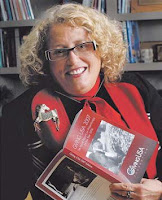Stephanie Strom, the New York Times' philanthropy reporter today quoted a study by the National Commission for Responsive Philanthropy the sum of which is that among a majority of foundations caught in the Madoff debacle those with smaller boards were more likely to lose money. Or put another way more of us are smarter than just a few of us.
In fact I read a study (which naturally I can't find right now) that concludes decisions made by a group may be more on target than decisions made by just one or a few people. (If you know the study I'm thinking of please let me know).
Board size and diversity matter for more than just making or losing money. The real challenge of governance is to strike a balance between the benefits conferred by a diverse board versus the risk of a board so large effective governance is impossible. Many charities develop big boards out of hope over caution - that the larger the board the more potential givers there are. This is almost never true in my experience. The results are first the gifts don't materialize and second a small executive committee winds up running the organization making for a two class board roster of greater and lesser beings. When that happens the diversity evaporates and the risk of dumbing down decision making is just as great as with the small board.
I haven't yet seen the NCRP study Strom quotes but I am more than familiar with a few of the foundations included in the study. The real problem is less size than cronyism. Small charity boards of every sort are more often stocked with intellectually arthritic founders, friends of the founders and family members or others who tend not to sass the alpha personality. In my view a board of five to seven people - provided they are truly independent - can govern effectively.
Size counts. But a willingness to break wind at the picnic counts for more.
In fact I read a study (which naturally I can't find right now) that concludes decisions made by a group may be more on target than decisions made by just one or a few people. (If you know the study I'm thinking of please let me know).
Board size and diversity matter for more than just making or losing money. The real challenge of governance is to strike a balance between the benefits conferred by a diverse board versus the risk of a board so large effective governance is impossible. Many charities develop big boards out of hope over caution - that the larger the board the more potential givers there are. This is almost never true in my experience. The results are first the gifts don't materialize and second a small executive committee winds up running the organization making for a two class board roster of greater and lesser beings. When that happens the diversity evaporates and the risk of dumbing down decision making is just as great as with the small board.
I haven't yet seen the NCRP study Strom quotes but I am more than familiar with a few of the foundations included in the study. The real problem is less size than cronyism. Small charity boards of every sort are more often stocked with intellectually arthritic founders, friends of the founders and family members or others who tend not to sass the alpha personality. In my view a board of five to seven people - provided they are truly independent - can govern effectively.
Size counts. But a willingness to break wind at the picnic counts for more.



